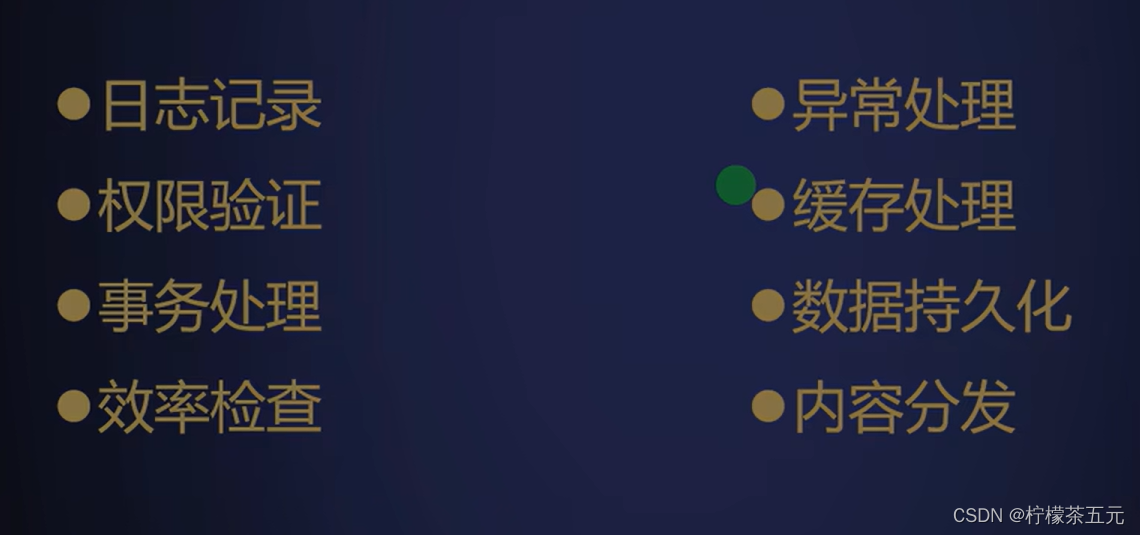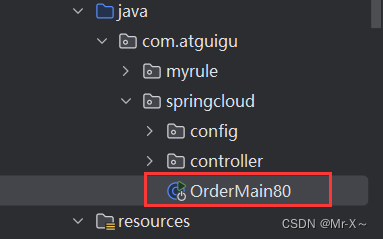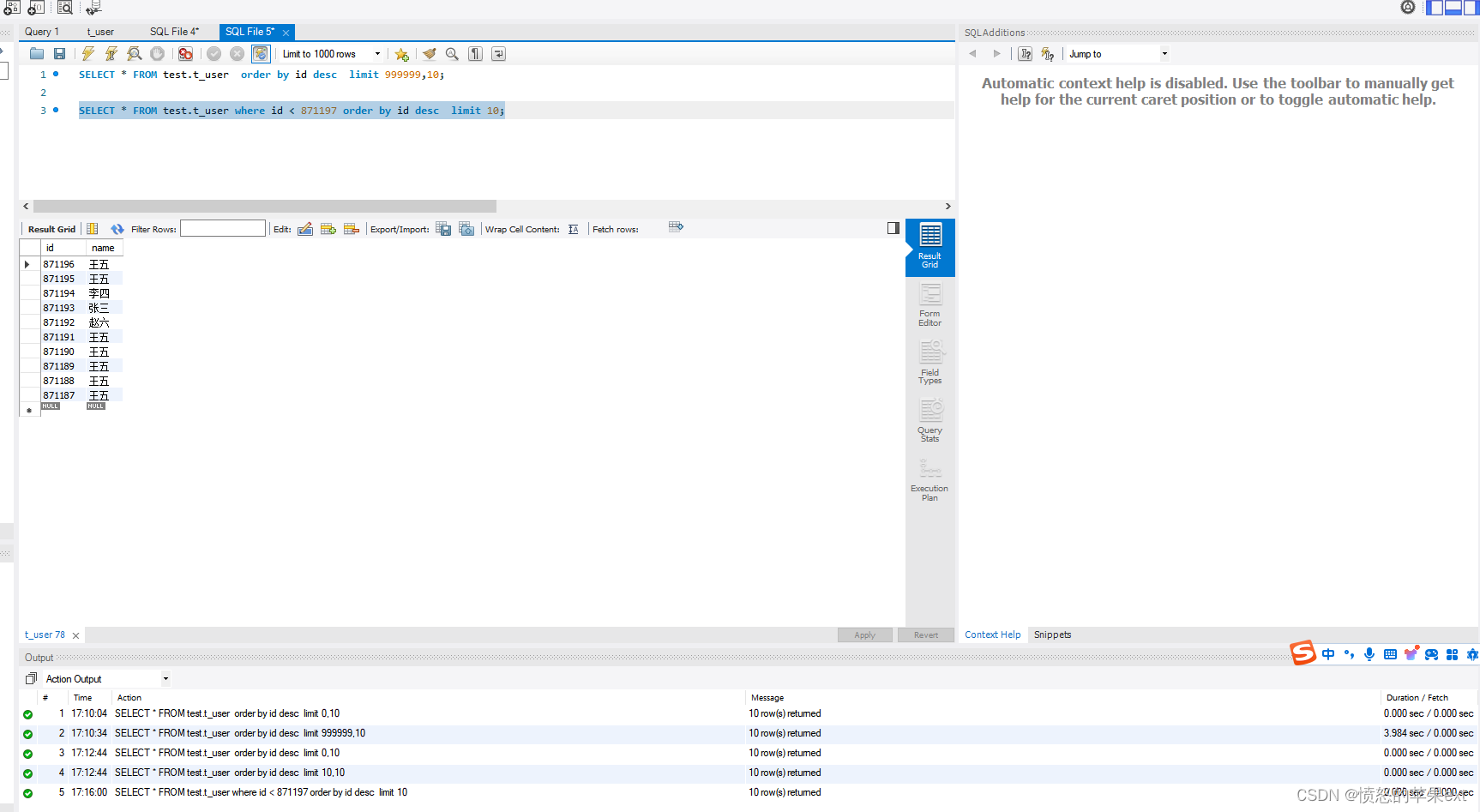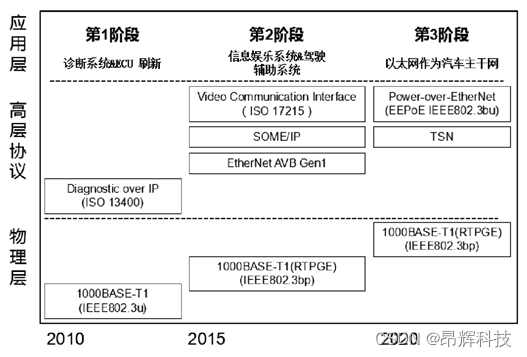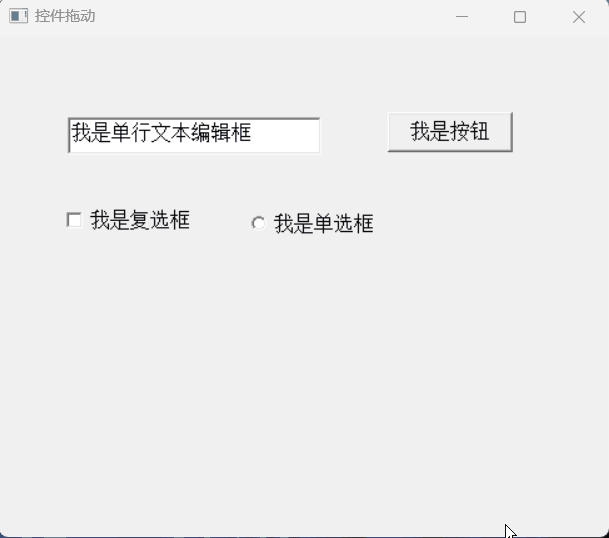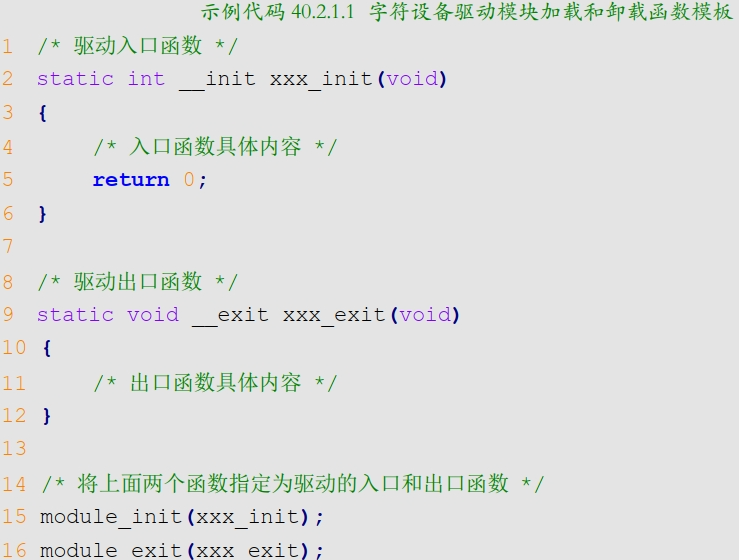推荐B站:【Spring AOP】实际开发中到底有什么用?_哔哩哔哩_bilibili
一、AOP的原理
AOP即Aspect Oriented Program,面向切面编程,是面向对象编程(OOP)的一种增强模式,可以将项目中与业务无关的,却为业务模块所共同调用的非核心代码封装成(比如事务管理、日志管理、权限控制等等)一个个切面,然后在运行的时候通过动态代理或者CGLib代理的方式织入到核心业务功能中。
【总结:AOP就是基础代码的增强,将非核心的代码抽取出来,封装成切面,进行复用】
二、方法注解
Spring 切⾯类中,可以在方法上使⽤以下注解,会设置⽅法为通知方法,在满⾜条件后会通知本
⽅法进⾏调⽤:
- 前置通知使⽤ @Before:通知⽅法会在⽬标⽅法调⽤之前执行。
- 后置通知使⽤ @After:通知⽅法会在⽬标⽅法返回或者抛出异常后调⽤。
- 返回之后通知使⽤ @AfterReturning:通知⽅法会在⽬标⽅法返回后调⽤。
- 抛异常后通知使⽤ @AfterThrowing:通知⽅法会在⽬标⽅法抛出异常后调⽤。
- 环绕通知使⽤ @Around:通知包裹了被通知的⽅法,在被通知的⽅法通知之前和调⽤之后执行⾃定义的行为。
三、AOP具体实现场景
场景一: 记录日志 (最常用)
场景二: 监控方法运行时间 (监控性能)
场景三: 权限控制
场景四: 缓存优化 (第一次调用查询数据库,将查询结果放入内存对象, 第二次调用, 直接从内存对象返回,不需要查询数据库 )
场景五: 事务管理 (调用方法前开启事务, 调用方法后提交或者回滚、关闭事务 )
四、AOP在具体业务中的应用
1.添加依赖
<dependency>
<groupId>org.springframework.boot</groupId>
<artifactId>spring-boot-starter-aop</artifactId>
</dependency>2.定义切点和切面
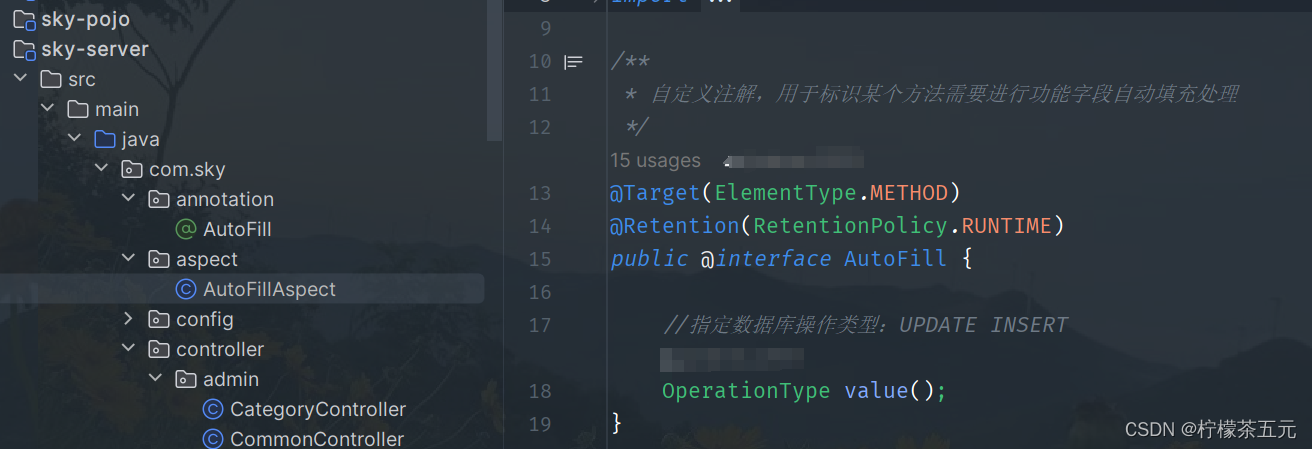
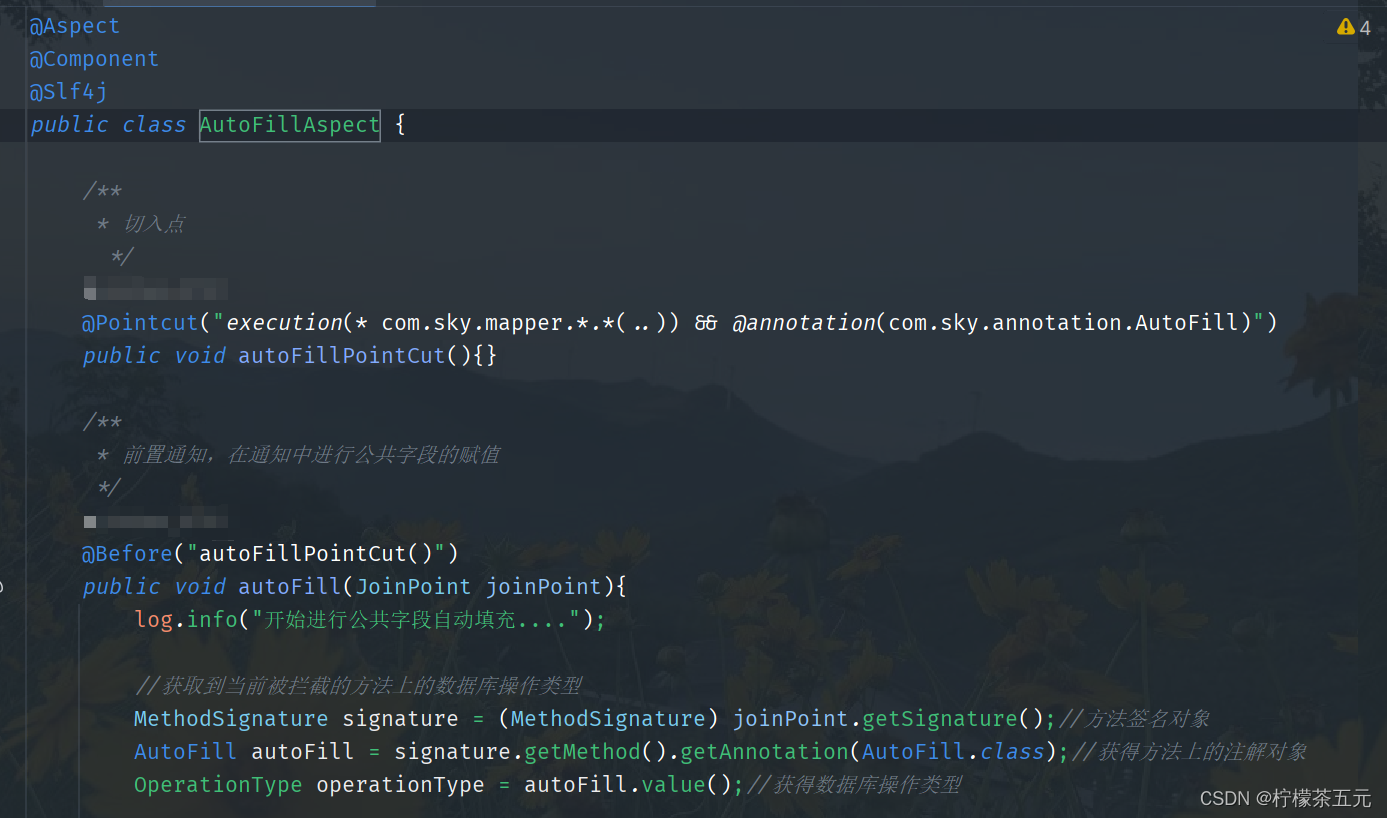
import com.sky.enumeration.OperationType;
import java.lang.annotation.ElementType;
import java.lang.annotation.Retention;
import java.lang.annotation.RetentionPolicy;
import java.lang.annotation.Target;
/**
* 自定义注解,用于标识某个方法需要进行功能字段自动填充处理
*/
@Target(ElementType.METHOD)
@Retention(RetentionPolicy.RUNTIME)
public @interface AutoFill {
//指定数据库操作类型:UPDATE INSERT
OperationType value();
}
/**
* 自定义切面,实现公共字段自动填充处理逻辑
*/
@Aspect
@Component
@Slf4j
public class AutoFillAspect {
/**
* 切入点
*/
@Pointcut("execution(* com.sky.mapper.*.*(..)) && @annotation(com.sky.annotation.AutoFill)")
public void autoFillPointCut(){}
/**
* 前置通知,在通知中进行公共字段的赋值
*/
@Before("autoFillPointCut()")
public void autoFill(JoinPoint joinPoint){
log.info("开始进行公共字段自动填充....");
//获取到当前被拦截的方法上的数据库操作类型
MethodSignature signature = (MethodSignature) joinPoint.getSignature();//方法签名对象
AutoFill autoFill = signature.getMethod().getAnnotation(AutoFill.class);//获得方法上的注解对象
OperationType operationType = autoFill.value();//获得数据库操作类型
//获取到当前被拦截的方法的参数---实体对象
Object[] args = joinPoint.getArgs();
if(args == null || args.length == 0){
return;
}
Object entity = args[0];
//准备赋值的数据
LocalDateTime now = LocalDateTime.now();
long currentId = BaseContext.getCurrentId();
//根据当前不同的操作类型,为对应的属性通过反射来赋值
if(operationType == OperationType.INSERT){
//为4个公共字段赋值
try {
Method setCreateTime = entity.getClass().getDeclaredMethod(AutoFillConstant.SET_CREATE_TIME, LocalDateTime.class);
Method setCreateUser = entity.getClass().getDeclaredMethod(AutoFillConstant.SET_CREATE_USER, Long.class);
Method setUpdateTime = entity.getClass().getDeclaredMethod(AutoFillConstant.SET_UPDATE_TIME, LocalDateTime.class);
Method setUpdateUser = entity.getClass().getDeclaredMethod(AutoFillConstant.SET_UPDATE_USER, Long.class);
//通过反射为对象赋值
setCreateTime.invoke(entity,now);
setCreateUser.invoke(entity,currentId);
setUpdateTime.invoke(entity,now);
setUpdateUser.invoke(entity,currentId);
}catch (Exception e){
e.printStackTrace();
}
} else if (operationType == OperationType.UPDATE) {
//为2个公共字段赋值
try {
Method setUpdateTime = entity.getClass().getDeclaredMethod(AutoFillConstant.SET_UPDATE_TIME, LocalDateTime.class);
Method setUpdateUser = entity.getClass().getDeclaredMethod(AutoFillConstant.SET_UPDATE_USER, Long.class);
//通过反射为对象赋值
setUpdateTime.invoke(entity,now);
setUpdateUser.invoke(entity,currentId);
}catch (Exception e){
e.printStackTrace();
}
}
}
}
